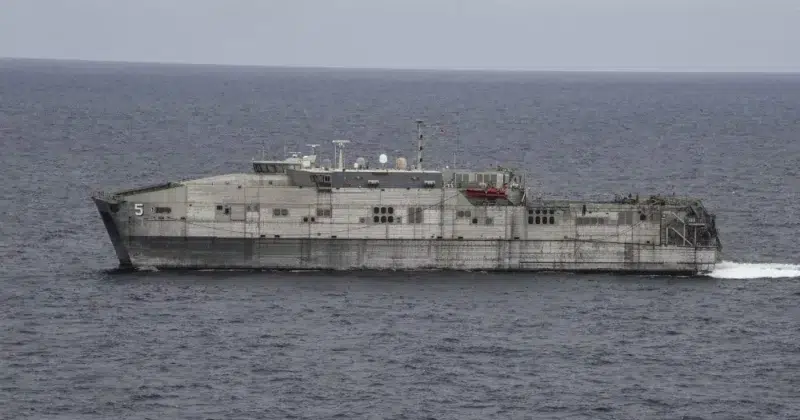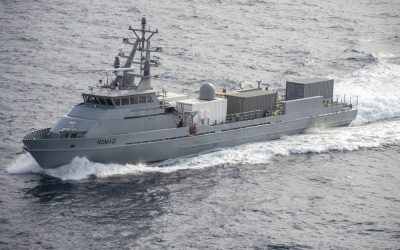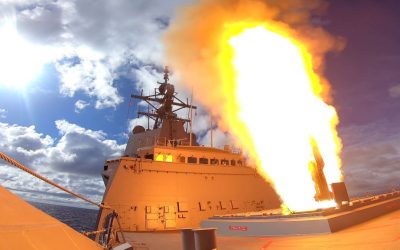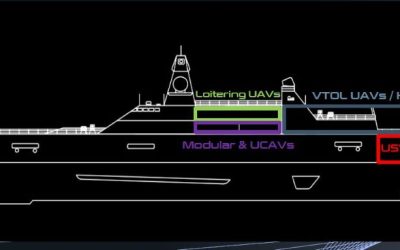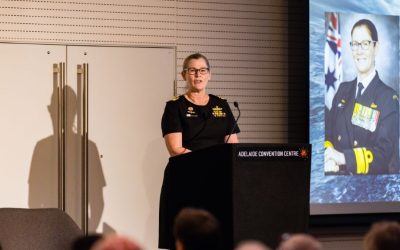The keel for the future USNS Cody, Expeditionary Fast Transport Ship (EPF 14), the first of the Spearhead class EPF Flight II configuration, was laid at Austal USA on 26 January 2022.
EPF 14 is the first of a newly configured version of the EPF with enhanced medical facilities, but in the long-term the platform could become an unmanned platform with plenty of firepower.
Beginning with EPF 14, the Flight II configuration of the vessel will have enhanced capabilities, including a combined forward resuscitative care capability with a limited intensive care unit and medical ward, while maintaining most of the original requirements of the ship.
With the new onboard facilities, Flight II EPFs will be able to stabilize postsurgical cases for evacuation without the requirement to first route them through a higher facility.
The EPF platform is also being developed in other ways, including, potentially, autonomous versions of the design. In June 2021, Austal Limited announced that Austal USA has been awarded a US$44 million fixed-price contract modification for the design, procurement, production implementation and demonstration of autonomous capability on EPF 13, USNS Apalachicola.
The US Naval Institute reported that, in the past, the company has also proposed that the EPF could be an option for the US Navy’s proposed Large Unmanned Surface Vessel (LUSV). It has also suggested that the EPF could be fitted with vertical launcher for missiles.
The original version of the Spearhead class EPF is a 103m high-speed aluminium catamaran with a large cargo deck, medium-lift helicopter deck and seating for 300+ embarked troops.
The EPF, formerly designated the Joint High Speed Vessel (JHSV), is based on a commercial catamaran design and is designed to bridge the gap between low-speed sealift and high-speed airlift, transporting personnel, equipment, and supplies, with access to littoral offload points including austere, minor and degraded ports.
